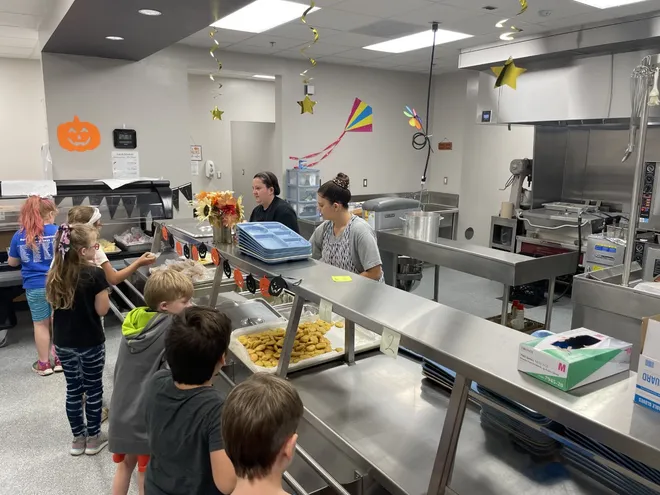By Ornella Attias, Year 10
In September 2020, students started to notice changes in LGB’s cafeteria. Overall, students were elated with the new cafeteria food being proposed such as sushi, pizza, fresh sandwiches, salads, and more options appealing to those with a sweet tooth, such as smoothies or cold chocolate. Although these changes seem to improve the taste quality of the cafeteria food, students have noticed that the cafeteria progressively has fewer healthy options to propose to the students. In fact, in a recent survey of 72 LGB students which asked them on a scale of 1 to 10 how balanced the cafeteria food was (with 1 being very unhealthy and 10 being very healthy), the majority of students said they believed the cafeteria was a 6/10.
The latest signature item to have been introduced is the remake of the Blacktap milkshake. Students get a choice of strawberry, chocolate, or vanilla milkshakes with whipped cream and toppings on top. This began as a reasonable addition to the menu because there was a good ratio of healthy/unhealthy foods for the students. These milkshakes are not incredibly popular amongst older students but are a hit for the middle school age groups. When muffins were added in addition to the milkshakes, students started to notice the shift in food quality. A group of Year 9 students agreed that it was an unhealthy snack that should not have been added to the menu.
From Primary to Year 9, students are obliged to stay on the school campus during lunch and break times. The unhealthy food problem has mainly been affecting the Year 9 group, who, as stated previously, cannot leave campus at lunch. Soraya Janoudi, a Year 9 student, thinks that if students are not able to have proper and healthy food choices, the Year 9 students should be allowed to leave campus at lunch.
The opposite problem affects students from Year 10, who would like to stay at school to eat lunch, and who are not able to enjoy their campus food due to the lack of nutritional value it brings. This leaves them with no other option but to leave campus during lunch. 41% of Year 10 respondents to the recent survey believe that the most important factor for cafeteria food is the number of daily options. Raquel Mimran, year 10, says “It is too complicated for me to bring a packed lunch from home and I would like to eat at school. I have very limited options at school and I end up eating the same salad 4 out of 5 times a week which really is not what I look forward to when I have a school lunch.” Raquel has since been leaving the school campus to find a better food option somewhere else.
It is disappointing for many students that they feel the need to leave the school campus at lunch when LGB prides itself on its cafeteria. In many of these cases, leaving school campus isn’t voluntary, but simply because students have no other option if they want to nourish themselves properly. Half of Year 10 students surveyed eat at the cafeteria less than twice a week. Albeit roughly 60% of Year 10 students agreed that the most important foods to have at the cafeteria are balanced foods between categories such as protein, vegetables, and starch.
The issue has not gone unnoticed by LGB parents either. When a parent of Year 8 and Year 12 students was asked what they thought of the school food, they replied that because of how unbalanced the school meals are, they have begun to give their child a packed lunch. They said that the food is increasingly unhealthy and that they have not been pleased with the school menu for several years.
Research has proven time and again that a healthy diet is important for students’ brains to function properly and focus. Many feel that the school should invest time in making proper school lunches available for all students. Student suggestions include scrambled, boiled, or poached eggs; fresh-made caesar salad; and cheeses; which would allow students to have a balanced plate they are happy with. Many feel that sweet treats are delicious and a good addition to the cafeteria, but the only problem is the ratio of treats to real, non-processed food. Many students would like to see this improvement in the cafeteria.



